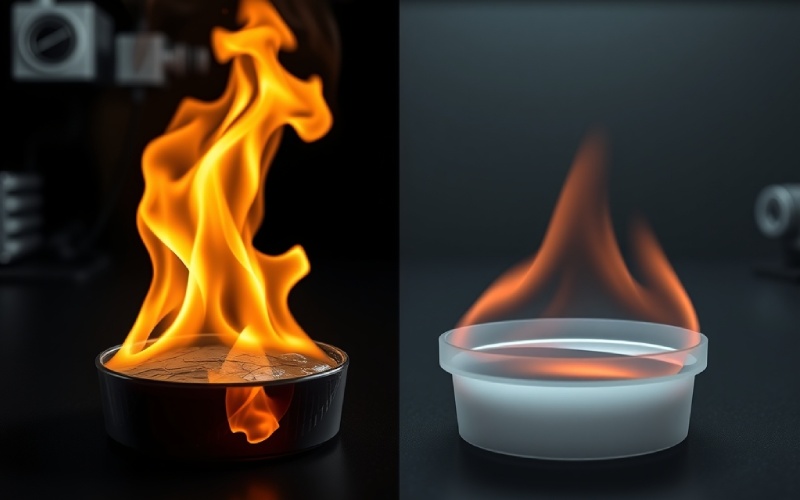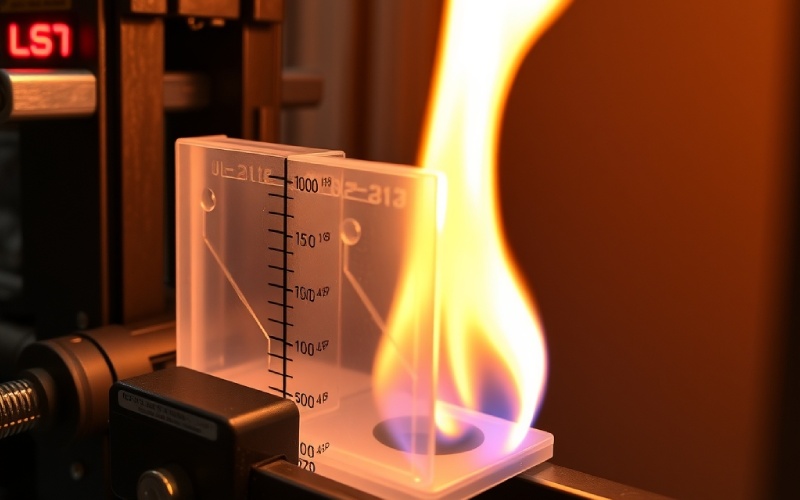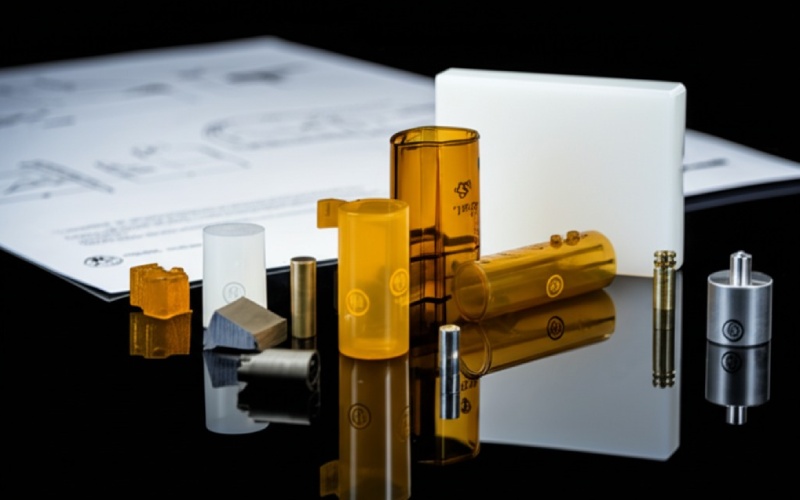Let Istar help you get started on your project with our experience and know-how!
Upload your design files and production requirements and we will get back to you within 30 minutes!

This article is my guide to help you understand flame retardant materials. I will also explain the very important UL 94 rating system. Reading this will help you stay away from expensive mistakes, follow safety rules, and pick the best plastic for your product to make sure it is safe and works well.
You can think of the UL 94 standard as a grade for plastic safety. It does not tell you that the material is “fireproof.” Instead, it tells you what a plastic does after it is put near a flame. Does it stop burning by itself? Does it drip hot pieces that could spread a fire? The UL 94 rating gives you the answers. Think about any product that plugs into a wall or has electronics inside. This is very important for things sold to people, or used in the automotive or aerospace industries. For these products, having the right UL 94 rating is not just a good idea. It is often a rule you must follow to be in compliance with safety laws.
The UL 94 test method may sound difficult, but the main idea is very simple. A special lab takes small, standard-sized pieces of a plastic material. These pieces are called test specimens. They then put these test specimens in a careful flame from a Bunsen burner. They leave it there for a set amount of time. The goal is to check the flammability of the material. They want to do it in a way that gives the same results every time.
During the test, the people doing the test look for a few main things. How long does the plastic specimen keep burning after the flame is taken away? Does the plastic drip? If it does drip, do the drips set a piece of cotton on fire? The cotton is placed right below the specimen. The answers to these questions help them put the material into a group, or classify it. This whole process is made to check how the plastic might act in a real fire. This helps us understand the possible fire hazards. The UL 94 standard is key for this check.
The UL 94 standard has two main kinds of tests. One is a horizontal burn test, and the other is a vertical burn test. The way the plastic specimen is held during the test makes a big difference in how hard the test is to pass. As you can probably guess, a vertical test is much harder. This is because gravity helps the flame move down the plastic.
In a horizontal test, the plastic bar is held sideways. A flame is put on one end for 30 seconds. To pass, the flame cannot move along the bar faster than a certain speed. This test is used for the HB rating. This is the easiest UL 94 rating a material can get. In a vertical test, the plastic bar is held straight up and down. The flame is put on the bottom edge. This setup makes the test much harder. The flame naturally wants to move up. Also, any plastic that melts can drip down. These tests give the V-ratings (UL 94 V-0, V-1, and V-2), which show that a material has better flame resistance.

This is a very important part for any engineer who is doing material selection. The vertical ratings, which are V-0, V-1, and V-2, are the most common ones you will see for devices and appliances. They all mean the plastic will stop burning by itself. The difference between them is how fast the flame goes out, and how safely it does so.
Here is a simple table to explain it:
| UL 94 Rating | Burning Time (for one piece) | Total Burning Time (for 5 pieces) | Are Flaming Drips Allowed? |
|---|---|---|---|
| UL 94 V-0 | Must stop burning within 10 seconds | Must not be more than 50 seconds | No flaming drips are allowed |
| UL 94 V-1 | Must stop burning within 30 seconds | Must not be more than 250 seconds | No flaming drips are allowed |
| UL 94 V-2 | Must stop burning within 30 seconds | Must not be more than 250 seconds | Flaming particles (drips) are allowed |
As you can tell, UL 94 V-0 is the best of these three ratings. A plastic with a UL 94 V-0 rating stops burning very fast after the flame is taken away. It also doesn’t make any flaming drips that could start another fire. This makes materials with a V-0 rating a great choice for a plastic enclosure that goes around delicate electronics. The UL 94 V-0 classification is often needed to make sure a product has good fire safety.
If a plastic has a UL 94 HB rating, it means the material passed the horizontal burn test. The letters “HB” stand for Horizontal Burn. This is the easiest to pass of the common UL 94 ratings. During the test, a specimen held sideways is put in a flame. The material gets an HB rating if it burns slowly. For a thickness under 3 mm, it must burn slower than 76 mm per minute. It can also pass if it stops burning before the flame gets to a certain line on the sample.
An HB rating means the plastic burns slowly. But, it will keep burning by itself after you light it. You will not see this kind of plastic used in most cases for electronics. This is because it does not give enough fire safety. However, it might be okay for other uses. These are uses where the chance of fire hazards is very small. It is very important to know that an HB rating means the material is not self-extinguishing. Getting the correct UL 94 rating is very important.
Yes, there are. While UL 94 V-0 is a great rating for many uses, some cases need even better fire safety. This is why the 5V ratings exist. The UL 94 5V test is much, much harder than the normal V-0, V-1, or V-2 tests. It’s a test made to act like a much bigger fire.
For the 5V test, a much stronger flame is put on the plastic test specimens. This flame is about five times stronger. The flame is put on the plastic five times, and each time it is for five seconds. To get a 5V rating, the plastic cannot burn all the way through, so no holes can be made. There are two levels: 5VB and 5VA. A 5VA rating is the highest rating of all. It means the plastic specimen did not burn through at all. These flame ratings are often needed for big cases for machines or for parts used in the aerospace industry.
This is a point that confuses a lot of people. A UL 94 rating is always connected to a certain thickness. A plastic resin might have a UL 94 V-0 rating when it has a thickness of 3.0 mm. But it might only have a V-2 rating at 1.5 mm. At a very thin thickness, it might have no rating at all. This is because a thicker part can take in more heat. It is also harder to set on fire.
When a manufacturer gets UL 94 approval for their plastic materials, they test it at different thicknesses. As a designer or engineer, it is your job to look at the material’s information sheet. You need to make sure the UL 94 rating you need is correct for your part’s thickness. If your plastic part has a wall thickness of 1.0 mm, you have to use a flame retardant plastic that has the needed rating at 1.0 mm. Do not just think the rating is for all sizes. This is a mistake people often make in both injection molding and 3D printing.

In my experience, picking the right material is the base of good product design. This is especially true in industries with a lot of rules, like consumer electronics, automotive, and aerospace. Following safety rules is not a choice. Following rules like the UL 94 standard is something you must do by law. It is also the right thing to do. Choosing a plastic that does not have the right UL 94 flammability rating can cause big problems. Your product might fail its safety approvals. You might have to recall your product. You could even be sued.
Following these safety standards makes sure your product won’t cause extra fire hazards. Groups that make safety rules all over the world use standards like UL 94. They do this to keep people safe. When you choose a plastic with the right UL 94 rating, you are making a safer product. This is not just about passing a test; it is about being responsible. That is why understanding the flammability of plastic materials is not just for material scientists. It is for every engineer and designer in the industry. Following the rules is very important.
Yes, for sure. For a long time, people only used 3D printing to make early models. But now, people use it to make the final parts for many products. Because of this, the need for flame retardant 3D printing materials has gone up. Many companies now sell special flame-retardant filaments and resin. These materials have official UL 94 ratings. This includes the very popular UL 94 V-0.
These materials are a big step forward. They let you make parts quickly that need protection from flammability. For example, you can make custom cases for electronics, parts for drones, or parts for the automotive industry. When you use 3D printing for these parts, it is still very important to look at the material’s information sheet. Make sure the flame retardant resin or filament has the UL 94 rating you need for the special thickness of your part. Using 3D printing with a material that has a UL 94 rating can save you a lot of time and money.
Choosing the right material is all about asking the right questions. First, what does your product do? And where will people use it? A plastic enclosure for a server in a large computer room has different needs than a part inside a car engine that gets very hot. You have to know the safety rules for your industry.
Second, what UL 94 rating do you need? For most cases that hold consumer electronics, a UL 94 V-0 rating is a very safe choice. Always check the rules that are for your product. Third, think about the design of your part, and especially its thickness. As we talked about before, the UL 94 rating is based on it. Lastly, you should talk to your material supplier. A good manufacturer can give you all the information about their flame retardant thermoplastic materials. They can help you select the right one. If you choose a plastic with the right flame-retardant additive and the correct UL 94 rating from the very beginning, your project will go much more easily.